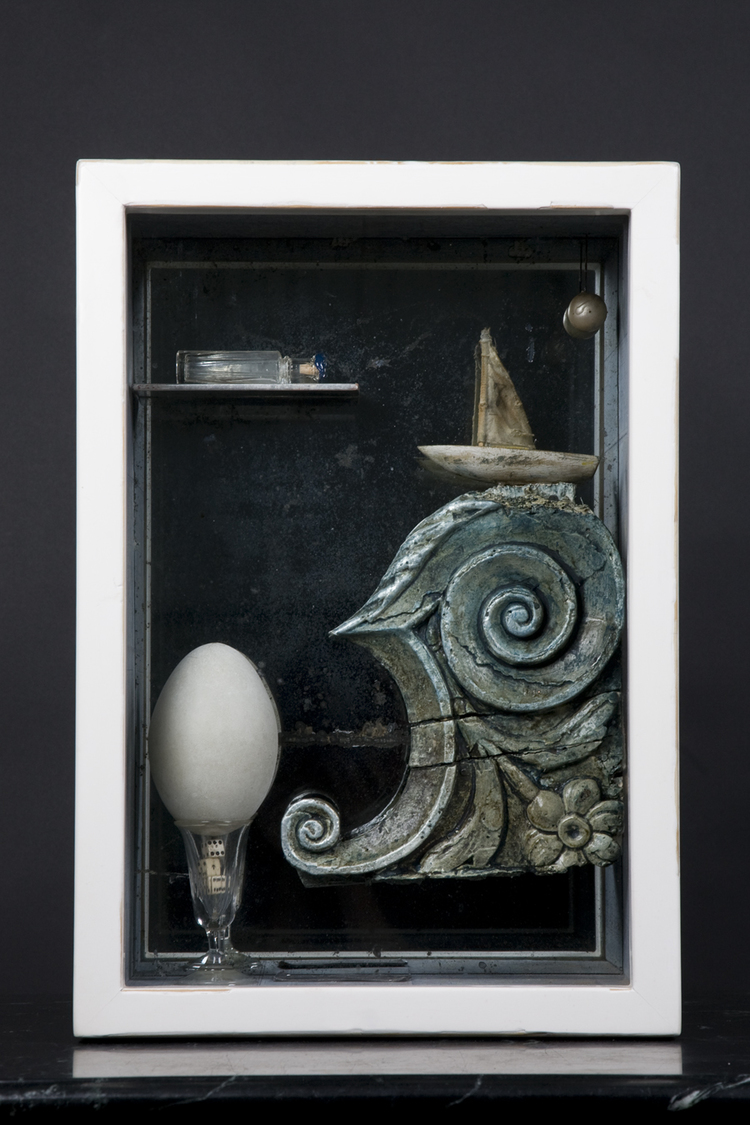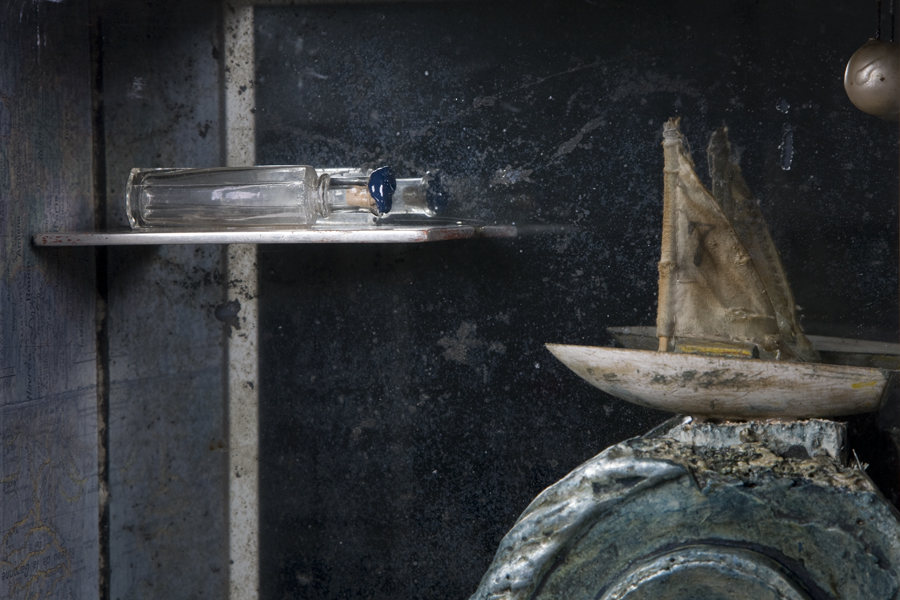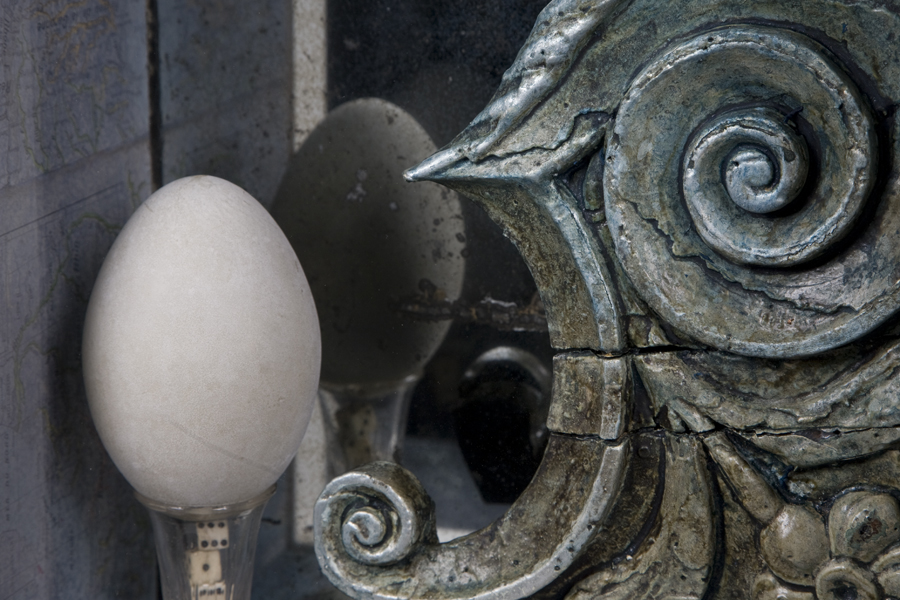This assemblage piece is simply called 'Swan'. Placed upon the prow or stern of a boat, the nautical figurehead of the swan was used to represent grace and mobility on the water - particularly in northern Europe.
The swan was a favourite figurehead by the 13th Century, and sailors also believed that the swan was the most fortunate bird in omens.
The piece comprises an 18th Century Carved Wooden fragment, redecorated using silver leaf and earth pigment washes, a vintage sailing boat, 19th Century handmade bone Die, an early 20th Century Swan's egg, a late 19th Century pearlescent hat pin and early 20th Century Nautical maps along with a Vintage Sherry Glass & perfume bottle.
The handmade glazed wooden box measures 340mm wide x 500mm high x 190mm deep.
The artwork is sold.




